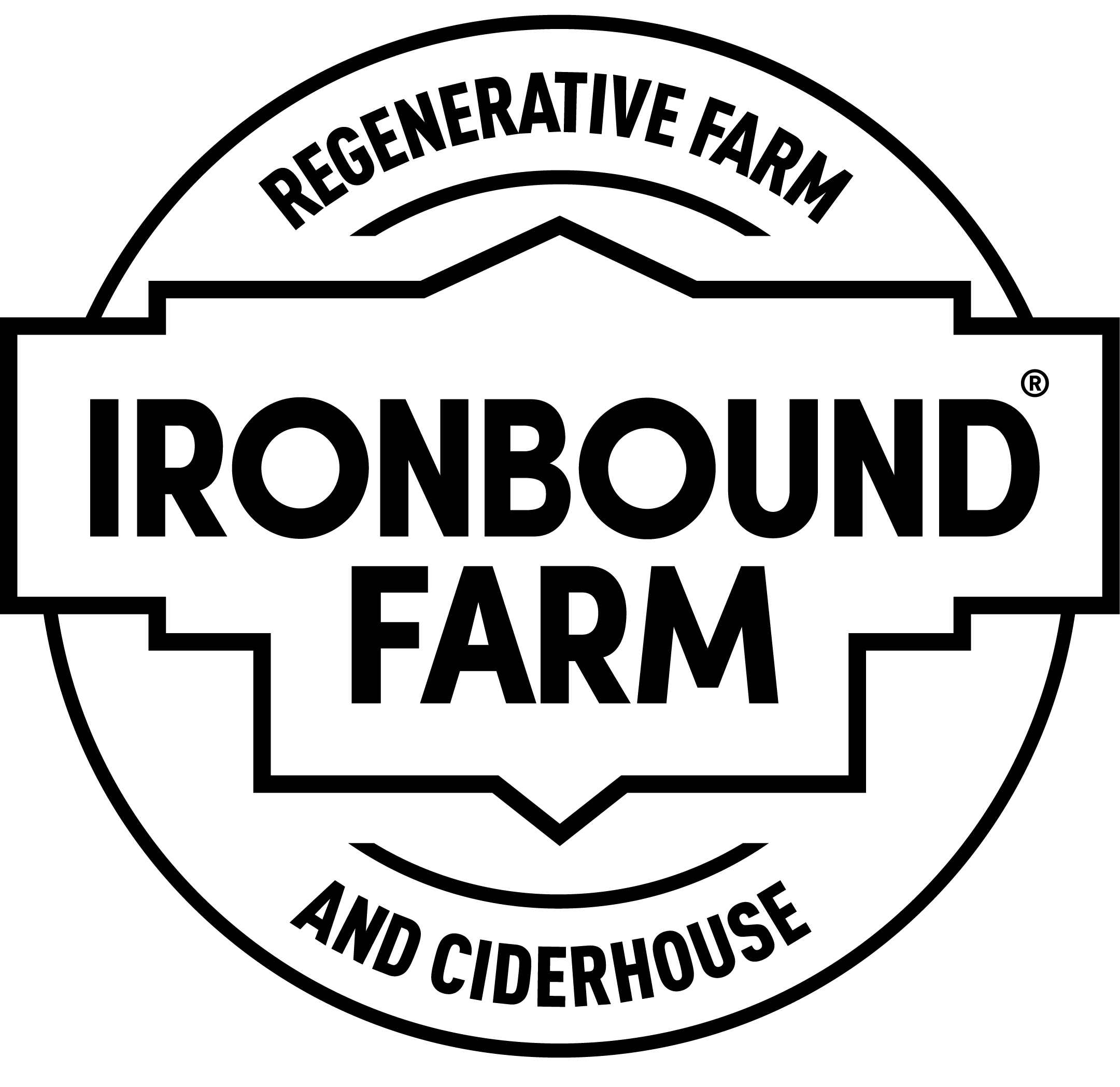NEWARK CIDER ROYAL
NEWARK CIDER ROYAL - 18.5%
Our revival of Cider Royal, America's first cocktail, began in 2012 when we set out to bring back the beloved, almost extinct Harrison apple - the tart-sweet-tannic gem that was the foundation of early America's renowned Newark Cider. Our pure Harrison cider is blended with Jersey's iconic spirit, Applejack, and then barrel-aged in toasted oak for a year to add complexity and depth.
Ironbound Farm’s cidermaker, Cameron Stark, describes the Harrison as “the most complete apple juice I’ve ever tasted” — a reference to the apple’s high sugar levels, mature tannins, rich mouthfeel, balancing acidity, and non-bitter bite. A UC Davis-trained winemaker who was mentored by Napa legends Bob Levy and Robert Sinskey, Stark notes that, in the right hands, Harrison apples make exquisite still and sparkling ciders. In fact, some of Newark’s early cidermakers made Harrison ciders that were so good they were widely, and successfully, passed off as champagne — a product that one wry critic more accurately named “shampagne.”
The Origin and Demise of the Harrison
The Harrison originated as a chance seedling in the early 18th century nursery orchard of a Mr. Osborne of South Orange. Recognizing its distinctive properties as a cider apple, Osborne propagated more trees from cuttings, several of which he gave to Samuel Harrison. From Harrison’s orchard, cuttings were distributed to orchardists throughout the region, helping to establish the legendary cider orchards of East Jersey. Along the way, the apple’s name changed from Osborne, to Long Stem, and then, forevermore, to Harrison.
By the early 19th century, Coxe observed that the Harrison was “the most celebrated of the cider apples of Newark in New Jersey, cultivated to high perfection, and to a great extent in that neighborhood, particularly on the Orange Mountain.” With its reputation for quality, the Harrison apple spread to other parts of the country. Yet, several 19th century authors, including noted American winemaker Nicholas Longworth, claimed that, by far, the best-tasting Harrisons were grown in New Jersey. They attributed that exceptional flavor to the composition of the region’s soils.
Like so many of America’s unique regional apples, the Harrison disappeared under the pressure of urbanization, increasing apple disease and pest pressure, and improved shipping methods that made it easier to transport apples from far away. In the early 20th century, changing consumer tastes and Prohibition sounded the for this once beloved apple. Having already fallen out of favor because it was viewed as an unsophisticated rural drink, hard cider never regained popularity after Prohibition ended. Orchardists stopped planting the Harrison, which became rarer and rarer until it was feared to be extinct.
The Harrison’s Rebirth
Orchardist Paul Gidez began his search for the legendary Harrison apple in the early 1970s. To his frustration, several years of inquiries to tree nurseries and land-grant universities turned up no trace of the once common tree. So, in 1976, Gidez drove to Essex County, New Jersey, to search for the Harrison in its historic home region. Stopping into a bagel shop in Irvington, he asked whether there were any old cider mills nearby and was directed to Nettie Ochs Cider Mill in Livingston. When he knocked on the door of the home adjacent to the mill, the young man who answered pointed to a nearby tree and said that this was a Harrison that his grandfather had planted around the turn of the century.
Gidez took cuttings from that tree and propagated them — first into an orchard on rented land in New Hampshire and then later into his current orchard in Vermont. It is from cuttings originating in this Vermont orchard that the Harrison apple has been pulled back from the brink of extinction.
Bringing the Harrison Home
Since 2012, the Ironbound farm team has planted thousands of Harrison trees at Ironbound Farm. The first one hundred Harrison trees planted at Ironbound Farm were obtained from the late Tom Burford, world renowned apple explorer, fruit historian, and orchard designer. A fifth generation Virginia apple grower and consultant to Monticello on the restoration of Jefferson’s orchards, Burford spread the story of the Harrison to farmers, the public, and the press through his frequent lectures, workshops, and apple tastings. He was also responsible for encouraging many American professional and hobby orchardists to include Harrisons in their orchards.*
Following Samuel Harrison’s tradition of community distribution, we’ve given thousands more to farmers in PA and NY, where we are building a network of regional grower-partners. Spreading the Harrison to other regional orchards allows us to see how this 300-year-old New Jersey apple adapts to modern soils, climates, and cultivation practices. It also enables us to support other local family farms and mitigate the risks of crop failure posed by the extreme weather and rising temperatures that are the result of climate change.




